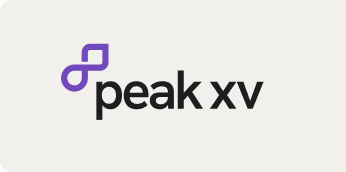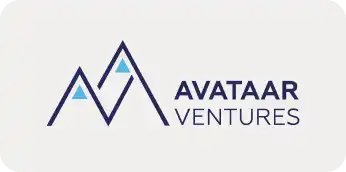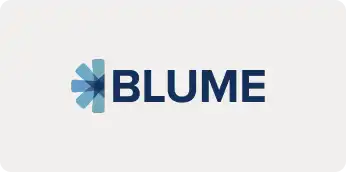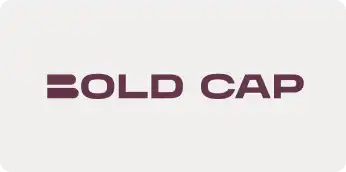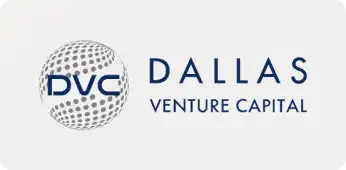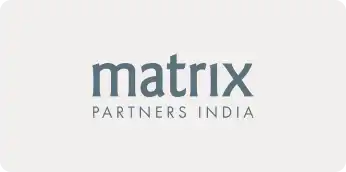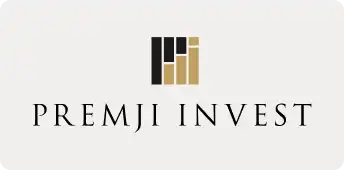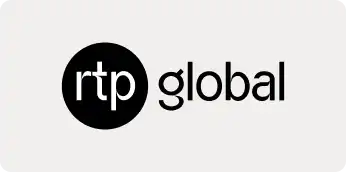An abridged version of COVID Reflections — a three-part series by Aneesh Reddy, co-founder of Capillary.
The Flipside of Turning Cash Positive
FY20 (April 2019 — March 2020) has been a monumental year for us. We went from a ~40% EBITDA loss/ Negative cash flows in Q4FY19 to our first ever EBITDA and Cash Positive Quarter in Q4FY20 (JFM). We were cash positive even after paying Venture debt principal and interest and working capital costs as well — cash positive to the dot.
Given we were turning cash-positive, we were comfortable with our cash reserves as our burn rate was consistently coming down. We were also working with our banking partners to extend our India working capital limits to cover our international receivables.
Apart from this, we were in the process of raising another $10mn of debt to further create a cash buffer. We had received term sheets for both and were a week away from a big four auditor team putting the final touches to their diligence report.
And then the lockdowns started
Things were going well for us until the mid of March, and then Covid-19 happened and one country after another went into lockdown.
We prepared for a crunch in cash flow without any visibility on the kind of churn we would see. Would some of our customers go bankrupt? Would we have big write-offs? We spoke to many people but no one had seen a nosedive like this ever.
When you make a plan, you keep a 10% — 15% buffer to compensate for the misses and plan for that much extra cash. However, in the worst case when the 10% cash burn climbs to 75%, it spells disaster for the business.
For instance, if you had a runway of 12 months at 10% burn, you would have less than 2 months at 75% burn! (Looking back now, our cash flows in the 6 weeks from March 15th to May 1st fell by ~75%).
So we had just 2 months of runway in the new 75% burn world, and I pinned my hopes on the working capital extension and the $10mn debt coming in as both were a week away from closure.
I called Rajan, and he advised against assuming any of that debt coming in and put sense in me to take the hard calls and take them in one go. As you would have guessed by now — after dragging the decision to mid-April — neither the working capital extension nor the $10mn of debt came through.
In moments of crisis, it’s important for businesses to assume the worst and take hard calls rather than hold onto false hopes.
A sure way to take a company down (besides running out of money), is to run out of energy. And one thing which would have definitely depleted energy and team morale is taking small cuts every week as bad news trickled in. We definitely didn’t want this to happen and hence decided to take the hard calls in one go.
Taking the Hard Calls
We got help from Saiki at xto10x to put together a worst-case plan to help us cut costs by a large percentage, so we could extend the runway to 3–4 quarters with our existing cash reserves.
We had three options :
- Take an outsized salary cut — ask vendors to take an outsized cut, and wait for things to recover
- Take a sustainable ~25% salary cut, put a large percentage of the team on furlough/ leave without pay and take them back when things recovered
- Take the hard calls now — take salary cuts to a level that is reversible if business recovered to 75%+ levels, and get the rest of the savings from letting go of employees and vendors you couldn’t afford.
After some serious thinking, we decided to go with Option 3, which meant we needed to take the hard calls now.
Our decision was made based on the analysis of current market scenarios and probable recovery period :
- Our higher exposure to offline retail and to markets like India and the Middle East which weren’t in the pink of health even before Covid-19 hit. Early recovery in these markets seemed highly unlikely.
- If we had gone with Option 1 or 2, this delayed recovery would have resulted in a lot of employees going without pay or having deep pay cuts for an extended period of time without any clarity on when things will get back to normal.
- If we choose Option 3 and retrenched early, it would give our affected team members the highest chance to get placed in other companies and access to any remaining jobs, before other companies reacted and started laying off. I had a hunch that we could leverage the goodwill Capillary had in the B2B SaaS ecosystem and run a successful outplacement process to help the affected folks.
Luckily for us, we had the support of our existing investors Warburg Pincus, Sequoia Capital, Avataar Venture Partners, Qualcomm Ventures along with some of our early angels Venkat Tadanki and Steffen Naumann. They set aside all other fund life considerations and decided to back us up with an interim-funding round — all committed in 1 week. Our Venture debt backers Innoven also agreed to our request to reduce our principal repayments by half for the next few months, until things recovered.
With a 17% average salary cut (no cuts for the entry salary tier, 15% for the mid-tier, 25% for the management tier and me going on no pay) and a low double-digit percentage of team retrenchment, we would be able to tide through a worst-case scenario and have money for at least the next 12–18 months.
We decided to act and took the cuts on March 27th.
The retrenchment
Given the lockdown, we had to do the retrenching remotely through video calls. There was a lot playing on our minds. Most of the impacted folks would have been confined to their homes, nowhere to vent, no friends to meet, and face the discomfort of telling their parents or families that they were let go. We had to let go of quite a few folks — some of whom have been with us for more than 10 years — and we had to do this over a video call during a lockdown.
I would not have signed up to be a founder or starting up if I had the foreknowledge of a day where I’ll have to do something like this.
Those four weeks have been the hardest of my life, and I have woken up with nightmares on several days during that month. We decided to do this in the most humane way possible and leave no stone unturned in supporting the affected folks.
Here is what we did :
- For the employees being retrenched, we decided to make sure they would be financially supported at least in the near term. We paid the annual bonus, encashed leaves and gave a minimum notice of 2 months, even for contractors. The average employee got a 4-month notice pay and folks who were with us longer got 7 months of pay. We actually didn’t have the cash so we decided to pay the notice as 4 months of salary over 4 months. Some of the folks we retained complained that the folks being let go were being treated better!
- We extended insurance till the end of H1 (September for everyone) and set aside INR 1Cr for any medical emergencies which the insurance might not fully cover.
- We brought on board YourDOST to coach the 30 teams that were going to run the exit process. The script for the exit meeting, the wording and the FAQs were closely scrutinized by them to make sure there was no word which was used that would make it harder for the impacted folks than it already was. YourDOST further trained the 30 teams on how to look for any clues of emotional vulnerability. We created a WhatsApp group where a panel member could send out a message if a conversation wasn’t going as expected and we would have the YourDOST team and someone from the senior management reach out to the employee immediately. The respective team manager would then be asked to keep in constant touch with these employees for the next few weeks, we also fast-tracked their outplacement.
- We further retained YourDOST to call up each impacted employee at least 2–3 times over the next few weeks. The impacted employees could reach out to the YourDOST team and get counselling sessions in case they were feeling low. A lot of impacted employees later wrote back to us acknowledging the support they got from YourDOST.
We then had the hard task of running an outplacement service. We chose 6 folks to form a dedicated team to run an outplacement service. Every leadership team member contributed by getting companies to participate. I personally wrote to over 50 founders, basically anyone who has ever reached out for advice on participating in the outplacement.
The Leadership Team and the Outplacement Team probably spent the next 8 weeks and weekends doing all they could to make this project successful. It was nothing less than running a well-oiled campus placement cell. We got 102 companies to participate, sourced 600+ open positions, and enabled over 2500 interviews.
We matched profiles and sent CVs for 99% of impacted employees; 80% of the folks had at least one interview opportunity and more than 60% had at least two interview opportunities, a few had 35 interview opportunities.
By end-April — mid-May, new openings/ pace of hiring really slowed down. Thankfully, we had a head start, and as of mid-June, more than 60% of the impacted folks have already joined new companies. In hindsight, I think our hunch of moving early definitely worked out. For folks who are yet to be placed, we have offered to fund 75% of the fee for any online upskilling courses they want to take up.
In times like these, it’s vital to be humane in your dealings, over-communicate, and do the right thing for everyone involved with your company.
Doing the Right Thing for All Stakeholders
Let me wrap this post up by sharing some of the things that leaders can do, to ensure everyone involved with the business is treated well.
Keeping your team going
It is important to have constant communication with the team and give them updates about the company and the overall business outlook.
We have run 50+ all hands, one every week for the whole company and an all-hands with me in smaller groups of 15–20 Captains over the last 3 months. On Zoom, we have had a 75%+ attendance on an average for the all-hands, we never saw such high attendance even during the physical town halls. We have had the pleasure of having Rajan, Alok and KK addressing the teams over the weeks and sharing their experiences from past recessions and what the breakout companies did differently.
We did an employee NPS survey in Jan and another one at the end of April — to our surprise, our rating was better in April than in Jan! It’s been amazing to see everyone rally together to navigate these tough times.
We also enforced a no-meeting lunch hour, remind people they can take leaves and decline meetings during WFH. We even announced a 4-day company-wide shut down from July 2nd to July 5th to give everyone some forced downtime.
Doing the right thing for your customers
We offered a 4-week fee waiver spread over the year to all customers who were impacted by the lockdowns. We have spoken to every customer at least twice a month, shared data on our learnings from China and built a WhatApp CRM-Commerce product similar to WeChat CRM-Commerce that worked in China even during the lockdown.
We are currently charging for this solution on an outcome linked basis. We have extended payment terms for every customer. We have also offered some of our other products (especially our e-commerce stack) on an outcome linked pricing and are helping customers to go-live with an online store in about 4 weeks.
Treating vendors well
When the crisis started in March, our first response was to hold back payments and we did; it’s not something I am happy about but I don’t think we had an option. In April we prioritized clearing the payments for all our smaller vendors. The larger vendors were paid in May and June as our cash flows improved and the funding also came in.
We are now at a normal to slightly stretched 60-day cycle. I must thank our cloud providers, system integration partners and SMS providers for being patient with us. Again, I think it’s important to have honest and transparent conversations with vendors and give them clarity on whether you can pay or not.
The worst thing to do is give wrong payment dates and upset their cash flow planning or worse, just avoid taking their calls.
Where are we now?
It’s been good to see things coming back to normal. On average, most of our customers are at ~50% YoY, our Chinese customers are at 95%+ YoY. While the data is optimistic, I still believe that the new normal on an average across Asia is probably going to be 85%.
Our May and June cash flows have been at 80% of normal, and we have decided to pay out the FY20 employee bonuses with the June salaries. We hope to reverse the pay-cuts in the July quarter as well. We are likely to sign-up as much new business in this quarter as we signed up in OND 2019, and we are taking as many customers Live as we normally did. Considering the ground we have covered, I also feel Capillary stands a good chance at being cash positive for the remaining three quarters of FY21 as well.
I think it would be prudent to wait for another quarter before saying that we are out of the woods, but I think we can all safely say the worst of Covid-19 is behind Capillary.
I definitely think we have been fortunate to have avoided descending into the downward spiral of doom, but as the adage goes — fortune favours the brave.
One post facto realization — it’s better to take the hard calls early and prepare for a worst-case scenario in unpredictable times, rather than living in constant stress and uncertainty and reacting to every negative news.
I feel you think with more clarity when you have a reset and not stressed about every negative trend that comes out. I think we moved fast and moved hard and it helped us to channelize our efforts in doing the best we could for our past and current employees as well as our customers.













